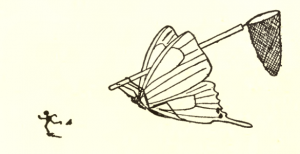
What Caught Our Attention: One would think that the corresponding author would have to be aware that they are submitting an article for publication — but apparently not, as this retraction demonstrates. The 2016 paper listed two corresponding authors — along with both of their emails and mailing addresses — but according to the retraction notice, one of them did not give consent “in any form” to the publication. Often, we see authors unaware of the use of their name when their email has been faked, but here, it’s possible the journal simply relied on the other corresponding author for all correspondence.
Journal: IUBMB Life
Authors: Ma Chunhua, Kong Lingdong, Long Hongyan, Ma Zhangqiang
Affiliation: Nanjing University,Nanjing, China; The Third Affiliated Hospital of Nanjing University of T.C.M, China; China Pharmaceutical University, China
The above article from IUBMB Life, published online on October 5th, 2016 in Wiley Online Library (http://wileyonlinelibrary.com), has been retracted by agreement between the authors, the Journal Editors-in-Chief, Dr. Angelo Azzi and Dr. William Whelan, and Wiley Periodicals, Inc. The retraction has been agreed because the article was submitted and approved for publication by Chunhua Ma and Long Hongyan without consent in any form by the named Corresponding Author, Kong Lingdong.
Date of Article: October 2016
Times Cited, according to Clarivate Analytics’ Web of Science: 2
Date of Notice: July 31, 2017
Like Retraction Watch? Consider making a tax-deductible contribution to support our growth. You can also follow us on Twitter, like us on Facebook, add us to your RSS reader, sign up on our homepage for an email every time there’s a new post, or subscribe to our daily digest. Click here to review our Comments Policy. For a sneak peek at what we’re working on, click here. If you have comments or feedback, you can reach us at [email protected].
I don’t buy the story 100%. Dr. Kong’s email is listed correctly at the bottom of the paper. Either the editor never bother to send her any email regarding the manuscript or Dr. Kong never really checked her email. Here is her page on the university website, showing the same email as listed for the manuscript.
http://life.nju.edu.cn/?mod=%D1%A7%D4%BA%B8%C5%BF%F6&fun=%BD%CC%CA%A6%C3%FB%C2%BC&name=%BF%D7%C1%EE%B6%AB&id=37
When manuscript submission and reviewing was still an all-paper affair, correspondence between an editor and the authors was exclusively through one corresponding author. Most electronic submission systems copied this workflow and while some have since included an obligation for authors to upload email addresses for their co-authors, which are subsequently alerted by the system that a manuscript on which they are a co-author has been submitted, not all systems do so. In addition, because the emails that the system sends out are obviously automated (and often use a “spoofed” email address in the “from” field), any email to the second submitting author may have gone to their spam folder. With all the predatory scam mails that we all receive daily, Dr. Kong may have missed the email alert. The latter is less likely because several emails would have been sent (submission, editorial decisions), but those could have been missed if Dr. Kong never checks the spam email box (as many people do, unwisely, because spam filters are useful but not infallible). so there are at least two plausible explanations for Dr. Kong being unaware of this submission.
Some editorial submission systems do not automatically contact all authors. As this case illustrates, this is a weakness that needs to be addressed urgently!